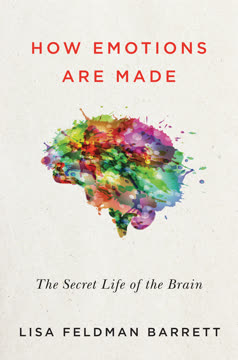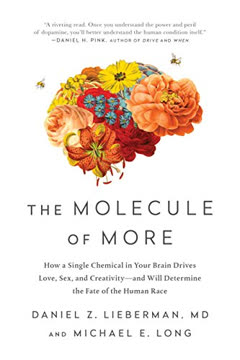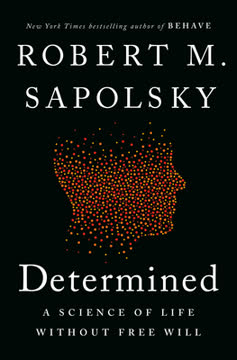가지 주요 요점
1. 행동은 유전자, 환경, 문화의 복잡한 상호작용에 의해 형성된다
유전자는 생물학적 사건을 지시하는 자율적인 요원이 아니다.
유전적 영향은 복잡하다. 유전자는 행동에 영향을 미치지만, 그 효과는 종종 작고 환경적 요인에 크게 의존한다. 유전자-환경 상호작용은 동일한 유전자가 다른 맥락에서 다른 효과를 가질 수 있음을 의미한다. 예를 들어:
- "전사 유전자"로 불렸던 MAOA 유전자는 어린 시절 학대를 경험한 개인에게서만 공격성을 증가시킨다.
- DRD4 유전자는 문화적 맥락에 따라 다른 효과를 나타낸다.
문화적 요인은 중요하다. 문화는 유전자가 발현되는 방식과 환경적 요인이 행동에 미치는 영향을 형성한다. 주요 문화적 영향에는 다음이 포함된다:
- 집단주의 대 개인주의 성향
- 사회경제적 불평등
- 종교적 및 이념적 신념
- 갈등 또는 협력의 역사적 경험
2. 뇌의 구조와 기능은 평생 동안 진화하며 행동에 영향을 미친다
중요한 것은, 시냅스 수, 수초화, 대사 측면에서 완전히 성숙하는 마지막 뇌 영역은 이마엽으로, 20대 중반까지 완전히 활성화되지 않는다.
신경가소성은 지속적이다. 뇌는 경험과 환경적 입력에 반응하여 평생 동안 변화하고 적응한다. 신경가소성의 주요 측면은 다음과 같다:
- 시냅스 가지치기 및 강화
- 특정 뇌 영역에서 새로운 뉴런 형성(신경발생)
- 신호 전달 속도에 영향을 미치는 수초화의 변화
중요한 시기가 존재한다. 특정 발달 창은 뇌 구조와 기능을 형성하는 데 특히 중요하다:
- 유아기: 빠른 시냅스 형성과 가지치기
- 청소년기: 전두엽과 감정 조절 시스템의 성숙
- 성인기: 지속적인 가소성, 그러나 초기 시기보다 느린 속도
3. 호르몬은 사회적 행동과 공격성을 형성하는 데 미묘한 역할을 한다
테스토스테론은 지위 획득 및 유지를 위해 필요한 일을 더 기꺼이 하게 만든다.
맥락이 중요하다. 테스토스테론과 옥시토신 같은 호르몬은 행동에 단순하고 보편적인 영향을 미치지 않는다. 그 영향은 사회적 맥락과 개인 차이에 따라 다르다:
- 테스토스테론은 지위를 얻기 위해 필요한 경우 친사회적 행동을 증가시킬 수 있다.
- 옥시토신은 내집단 결속을 강화하지만 외집단에 대한 적대감을 증가시킬 수 있다.
호르몬-행동 관계는 양방향이다. 행동은 호르몬 수치에 영향을 미치며, 호르몬도 행동에 영향을 미친다:
- 경쟁에서 승리하면 테스토스테론 수치가 증가한다.
- 사회적 결속은 옥시토신 수치를 증가시킨다.
4. 어린 시절 경험은 성인 행동과 뇌 기능에 지속적인 영향을 미친다
어린 시절 역경은 성인이 (a) 우울증, 불안, 또는 약물 남용을 겪을 가능성을 증가시키고; (b) 특히 전두엽 기능과 관련된 인지 능력 손상을 초래하며; (c) 충동 조절 및 감정 조절 능력을 손상시키고; (d) 폭력을 포함한 반사회적 행동을 유발하며; (e) 어린 시절의 역경을 반복하는 관계를 형성할 가능성을 높인다 (예: 학대적인 파트너와 함께 지내기).
초기 스트레스는 장기적인 영향을 미친다. 어린 시절의 역경은 뇌 구조와 기능에 지속적인 변화를 초래할 수 있다:
- 높은 스트레스 호르몬 수치는 해마와 전두엽의 발달에 영향을 미친다.
- 편도체의 감정 처리 변화
긍정적인 경험도 중요하다. 어린 시절의 지지적이고 양육적인 환경은 건강한 뇌 발달과 회복력을 촉진한다:
- 안정된 애착은 더 나은 감정 조절을 촉진한다.
- 풍부하고 자극적인 환경은 인지 발달을 향상시킨다.
5. 청소년기는 뇌 발달과 행동 패턴에 중요한 시기이다
청소년기에 변연계, 자율신경계, 내분비계가 전속력으로 작동하는 반면, 전두엽은 여전히 조립 지침을 해결하고 있다면, 우리는 청소년들이 왜 그렇게 좌절스럽고, 훌륭하고, 어리석고, 충동적이고, 영감을 주고, 파괴적이고, 자기 파괴적이고, 이타적이고, 이기적이고, 불가능하고, 세상을 변화시키는지 설명할 수 있다.
전두엽 성숙이 핵심이다. 다른 뇌 영역에 비해 전두엽의 늦은 발달은 많은 청소년 행동을 설명한다:
- 위험 감수와 감각 추구 증가
- 감정 반응성 증가
- 충동 조절 및 장기 계획의 어려움
또래의 영향이 절정에 달한다. 청소년은 사회적 영향에 특히 민감하다:
- 사회적 거부에 대한 민감성 증가
- 또래의 승인에 대한 강한 욕구
- 또래가 있는 상황에서의 위험 감수 증가
6. 문화적 차이는 행동, 인지, 사회적 규범에 큰 영향을 미친다
문화의 영향은 엄청나다.
지각과 인지는 다르다. 다른 문화는 사람들이 정보를 처리하고 세상을 인식하는 방식을 형성한다:
- 개인주의 문화는 시각 장면에서 중심 객체에 집중한다.
- 집단주의 문화는 맥락 정보를 더 많이 고려한다.
사회적 행동은 문화적으로 영향을 받는다. 문화적 규범은 대인 관계와 도덕적 판단을 형성한다:
- 공정성과 정의의 개념은 문화마다 다르다.
- 감정 표현과 조절은 다르다.
문화적 진화는 지속적이다. 문화는 계속해서 변화하고 적응한다:
- 세계화는 문화적 혼합과 혼종화를 초래한다.
- 기술 변화는 새로운 문화적 관행과 규범을 창출한다.
7. 진화는 인간 행동을 형성했지만, 우리는 종종 진화적 예측에서 벗어난다
우리는 본질적으로 심각하게 혼란스럽다—약간의 일부다처제 성향을 가지고 있으며, 그 중간 어디쯤에 떠 있다.
인간의 짝짓기 시스템은 유연하다. 고정된 짝짓기 패턴을 가진 많은 종과 달리, 인간은 일처일부와 일부다처적 경향을 혼합하여 보여준다:
- 대부분의 문화는 일부다처제를 허용하지만, 대부분의 개인은 사회적으로 일처일부이다.
- 인간의 성적 이형성은 짝짓기와 경쟁 종 사이의 중간 정도이다.
협력은 친족을 넘어 확장된다. 인간은 친족이 아닌 사람들과도 전례 없는 수준의 협력을 보여준다:
- 대규모 사회는 낯선 사람들 간의 협력을 필요로 한다.
- 문화적 제도는 즉각적인 친족 그룹을 넘어 협력을 촉진한다.
8. 협력과 이타주의는 개인, 친족, 그룹 선택의 조합에서 비롯된다
동물은 종의 이익을 위해 행동하지 않는다. 그들은 다음 세대에 전달되는 유전자의 수를 최대화하기 위해 행동한다.
여러 수준의 선택이 작용한다. 인간 행동은 다음에 의해 형성된다:
- 개인 선택: 개인의 생존과 번식에 유리한 특성
- 친족 선택: 유전자를 공유하는 친족을 돕는 것
- 상호 이타주의: 상호 이익을 위한 비친족과의 협력
- 그룹 선택: 개인 비용에도 불구하고 그룹에 유리한 특성
문화적 관행은 선택에 영향을 미친다. 인간 문화는 새로운 선택 압력을 창출한다:
- 사회적 규범은 그룹에 유익한 행동을 촉진할 수 있다.
- 종교와 법률 같은 제도는 협력을 강제한다.
9. 신경과학은 우리의 최선과 최악의 행동의 생물학적 기초를 밝힌다
뇌는 행동이 "시작"되는 곳이 아니다. 그것은 다가올 장에서 모든 요인이 수렴하고 행동을 창출하는 최종 공통 경로일 뿐이다.
도덕성과 공감의 신경 회로. 친사회적 행동에 관여하는 주요 뇌 영역:
- 전두엽: 실행 제어 및 도덕적 추론
- 전측 대상회: 공감 및 갈등 모니터링
- 편도체: 감정 처리 및 공포 반응
공격성과 폭력의 생물학적 기초. 신경 및 호르몬 요인이 기여한다:
- 전두엽 제어와 변연계 감정 반응성 간의 불균형
- 세로토닌 및 도파민 신호 전달의 변화
- 초기 생애 스트레스가 뇌 발달에 미치는 영향
가소성은 변화를 가능하게 한다. 행동의 신경생물학을 이해하면 개입의 가능성이 열린다:
- 전두엽 기능을 향상시키거나 편도체 반응성을 줄이기 위한 표적 치료
- 건강한 뇌 발달을 촉진하기 위한 사회적 및 환경적 개입
인간의 독특한 자유 의지 Behave PDF 무료 다운로드 2023 로버트 사폴스키의 인간의 최선과 최악의 생물학.
마지막 업데이트 날짜:
FAQ
What's Behave: The Biology of Humans at Our Best and Worst about?
- Exploration of Human Behavior: The book examines the biological underpinnings of human behavior, focusing on aggression, violence, and prosocial actions. It explores how factors like neurobiology and hormones influence our actions.
- Interdisciplinary Approach: Robert M. Sapolsky integrates insights from neurobiology, psychology, and sociology to provide a comprehensive understanding of human behavior. He argues that behavior requires a multifaceted perspective.
- Contextual Understanding: Sapolsky emphasizes that context is crucial in determining whether a behavior is seen as good or bad, highlighting how the same action can be interpreted differently based on circumstances.
Why should I read Behave: The Biology of Humans at Our Best and Worst?
- Insightful Analysis: Sapolsky offers a deep dive into the complexities of human behavior, making it valuable for those interested in psychology, biology, or social sciences. His engaging style makes complex concepts accessible.
- Relevance to Current Issues: The book addresses societal issues like violence, morality, and empathy, providing a scientific framework to understand these phenomena, making it timely in today's context.
- Encourages Critical Thinking: By challenging simplistic views of behavior, Behave encourages readers to think critically about human motivations, promoting a nuanced understanding of morality and ethics.
What are the key takeaways of Behave: The Biology of Humans at Our Best and Worst?
- Biology and Behavior Interconnected: Biological factors, including hormones and brain structure, significantly influence behavior. Sapolsky argues against distinguishing between biological, psychological, or cultural aspects of behavior.
- Context Matters: The interpretation of behaviors as good or bad is heavily dependent on context. Sapolsky notes that we often hate the wrong kind of violence but love it in the right context.
- Complexity of Human Nature: Human behavior is influenced by genetics, environment, and social learning, requiring a holistic view rather than isolated components.
What are the best quotes from Behave: The Biology of Humans at Our Best and Worst and what do they mean?
- “The opposite of love is not hate; its opposite is indifference.” This highlights the importance of empathy and engagement, suggesting that apathy can be more damaging than active dislike.
- “We are always shadowed by the threat of other humans harming us.” Reflects the inherent risks in human interactions and the potential for violence, underscoring the need to understand aggression's roots.
- “The more we consume, the hungrier we get.” Addresses the paradox of modern life, where increased access to pleasure can lead to greater dissatisfaction, suggesting insatiable desires can have negative consequences.
How does Robert M. Sapolsky explain aggression in Behave?
- Biological Basis of Aggression: Hormones like testosterone and neurobiological factors contribute to aggressive behavior. Testosterone amplifies preexisting tendencies rather than directly causing aggression.
- Contextual Triggers: Aggression often responds to specific social contexts or challenges, with testosterone levels rising in response to social challenges, increasing aggressive behavior likelihood.
- Learning and Experience: Aggression is shaped by social learning and past experiences, with learned behaviors playing a significant role in future aggression.
What role do hormones play in human behavior according to Behave?
- Influence of Testosterone: Testosterone amplifies existing tendencies rather than causing aggression outright, with its actions being contingent and amplifying.
- Oxytocin and Social Bonds: Oxytocin fosters social bonding and prosocial behavior but also promotes in-group favoritism, making us more prosocial to Us and worse to everyone else.
- Stress Hormones: Chronic stress hormones impair cognitive function and emotional regulation, leading to impulsive and aggressive behaviors, affecting decision-making and empathy.
How does Behave address the concept of free will?
- Skepticism of Free Will: Sapolsky doubts traditional free will, suggesting behaviors are influenced by biological and environmental factors beyond individual control, leading to more compassionate views.
- Complex Interplay of Factors: Behavior results from genetics, hormones, and social context, making it difficult to attribute actions solely to free will.
- Implications for Justice: This perspective challenges moral culpability, suggesting understanding behavior's biological basis can lead to more effective interventions than punitive measures.
What does Robert M. Sapolsky say about the effects of childhood adversity in Behave?
- Long-term Consequences: Childhood adversity links to negative outcomes in adulthood, including mental health issues and antisocial behavior, with multiple adversities dimming chances of a happy adulthood.
- Biological Mechanisms: Early-life stressors elevate glucocorticoid levels, impairing brain development and function, increasing anxiety, depression, and aggression risks.
- Resilience Factors: Despite risks, many individuals with childhood adversity do not develop significant issues, with supportive relationships mitigating adversity effects.
How does Behave explain the relationship between empathy and behavior?
- Empathy as a Complex Emotion: Empathy involves emotional and cognitive components, allowing understanding and sharing of others' feelings, leading to prosocial behavior but can be overwhelming.
- Neurobiological Underpinnings: Brain regions like the anterior cingulate and insula activate when witnessing others in pain, with regulation of adverse empathic emotions leading to prosocial actions.
- Adolescent Empathy: Adolescents experience heightened empathy, leading to positive and negative outcomes, with empathic hyperarousal sometimes hindering effective action.
How does Behave address the impact of culture on behavior?
- Cultural Influences on Behavior: Cultural norms and values shape behaviors, including aggression and prosocial actions, with culture shaping how and where we look at the world.
- Variability Across Cultures: Behaviors acceptable in one culture may differ in another, with moral judgments differing cross-culturally, crucial for addressing global issues.
- Cultural Context in Empathy: Cultural background affects empathic responses and social interactions, with oxytocin's actions depending dramatically on context, influencing how we relate to others.
How does Behave connect behavior to evolutionary biology?
- Evolutionary Perspective on Behavior: Behaviors are understood through evolution, with traits enhancing survival and reproduction favored over time.
- Kin Selection and Altruism: Behaviors promoting relatives' survival can be advantageous for passing on shared genes, illustrating altruism's evolutionary basis.
- Cultural Evolution: Biological traits evolve, and cultural traits change over time, influenced by environmental pressures and social dynamics.
How does Behave relate to current societal issues?
- Understanding Violence and Aggression: Insights into biological and environmental factors contributing to violence and aggression, essential for reducing violence and promoting peace.
- Mental Health Implications: Understanding biological basis of mental health issues, advocating for compassionate treatment approaches, informing policies and practices.
- Promoting Empathy and Cooperation: Emphasizes fostering empathy and cooperation in addressing societal challenges, understanding biological foundations to create a compassionate society.
리뷰
행동은 생물학적, 진화적, 문화적 관점에서 인간 행동을 탐구한다. 사폴스키는 신경과학, 호르몬, 유전학, 환경에 대한 연구를 종합하여 인간이 왜 그렇게 행동하는지를 설명한다. 이 책은 포괄적인 범위, 매력적인 글쓰기 스타일, 그리고 사폴스키의 유머로 찬사를 받았다. 일부 평론가들은 책이 다소 복잡하고 때때로 편향적이라고 느꼈지만, 많은 이들은 인간 본성에 대한 단순한 견해에 도전하는 획기적인 작품으로 평가한다. 사폴스키는 행동의 복잡성을 강조하며 단일 원인 설명에 반대하고, 인간 행동을 형성하는 데 있어 생물학과 환경의 상호작용을 강조한다.
Similar Books




















